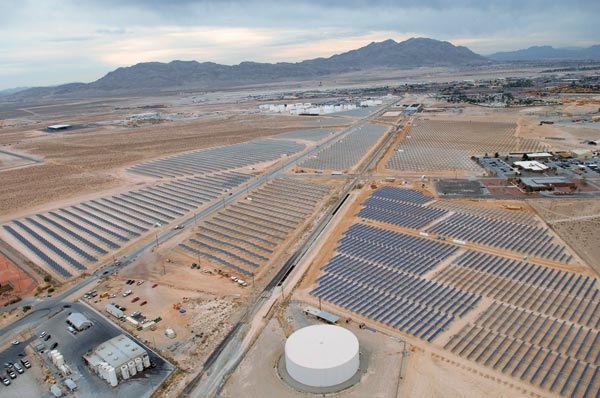Sustainable Energy
Solar Power Will Make a Difference--Eventually



Of the various next-generation technologies that are considered whenever the future of energy is discussed, cheap solar power is the most promising. Earth is bathed in nearly limitless energy from the sun, and this energy can be used to produce electricity without releasing any greenhouse gases. The European Commission calculates that fitting the surface of every south-facing roof in Europe with solar cells would completely meet the continent’s electricity demands.
But the principal technologies for generating solar electricity–solar thermal power and photovoltaic cells–are too expensive to displace fossil fuels to any significant degree. Today, power produced by silicon-based photovoltaics is about five times as costly as that generated from fossil fuels. And while solar thermal systems can produce electricity more cheaply, they require large plots of land in very sunny locations.
Photovoltaics have been getting cheaper: according to the U.S. National Renewable Energy Laboratory, the cost of manufacturing photovoltaic modules dropped an average of 5.5 percent per year between 1992 and 2005. But even if this trend continues indefinitely, the European Commission has estimated, photovoltaics will be responsible for just 4 percent of the world’s electricity by 2030. That’s a considerable improvement over the tiny fraction of 1 percent of global electricity that solar power produces today, but it’s still not enough to reduce greenhouse-gas emissions significantly.
What’s really needed is better solar technology. Many research groups have sprung up to pursue different approaches (see “Research to Watch”), which include making solar cells out of organic polymers, harnessing solar energy to split water into oxygen and hydrogen, using biological pathways and nano devices to capture solar energy in the form of liquid fuels, and trapping and harvesting photons with the aid of nanoparticles. If we develop adequate storage technologies, cheap solar power could become ubiquitous. Covering 1.7 percent of the United States’ land area with solar collectors operating at an efficiency of 10 percent would supply three terawatts of power, enough to meet America’s energy needs, according to Nate Lewis, a chemist at Caltech. (For comparison, 3.6 percent of the land area of the United States is in the National Park System.) In fact, the sun delivers more energy to Earth in one hour than humanity consumes over the course of a year, making solar the only renewable energy source that can keep up with global demands.
Chart credit: Tommy McCall